How long should your breathe up really be? When you surface from a dive, your body needs to replenish its oxygen stores and high energy phosphates. The body also needs to get rid of the excess CO2 and other waste products such as lactate. Once that is done, or perhaps at the same time, you need to start relaxing for the following dive. But how long does it take? A minute? Ten minutes? Let’s find out.
This article is not about decompression sickness, which I will cover in another article.
Oxygenating the blood
For an average Joe with 70 kg body mass, 5 liters of blood and a heart stroke volume of 70 ml, the blood is pumped around completely in 71 strokes (5000 ml of blood divided by 70 ml = 71). Based on the assumptions that 1) his heart rate rises to about 110 immediately after a dive and drops after a minute, and 2) the lungs fully oxygenate all blood that passes by, he should have fully oxygenated blood within 39 seconds.
After 39 seconds, your blood is fully oxygenated.
If you have ever done 2 dives with only a 39 second breathe up in between, you know that this is not the full story. The body is not yet back to steady state within 39 seconds, so let’s continue exploring this topic.
High energy phosphates
You may have read my articles on muscle metabolism and muscle fiber. If you have, and you were not abysmally bored, you may remember the ‘high-energy phosphates’ or ATP-CP. If you did fall asleep on your keyboard while reading here is a one sentence recap: ‘High energy phosphates in muscles can provide energy for about 10-15 seconds of maximal muscle contraction and do so without costing O2 or producing CO2’. But how long does it take to replenish these high energy phosphates after a dive?
Up to 70% of CP is resynthesized in 15 seconds. If you are severely vasoconstricted because of cold or the dive reflex it may take somewhat longer. The remaining 30% will be resynthesized after roughly 2:45 minutes, so you need about 3 minutes in total to replenish high energy phosphates.
After 3 minutes, your high energy phosphates are replenished.
Excess CO2
And what about the stuff we need to get rid of after a dive? How long does it take to vent off all that excess CO2? Available data for the recovery of Steller sea lions suggest long recovery times (large variations between individuals are common). These recovery times are based on VCO2, the exhaled carbon dioxide after a dive.
For a dive of 3 minutes, VCO2 takes approximately 5:30 to recover, and for a dive of 2 minutes we can expect a 4-minute recovery time. The reason CO2 levels take a long time to return to normal is that CO2 is transported throughout the bodies tissues, and it takes time for the CO2 to make its way back into the bloodstream and to the lungs.
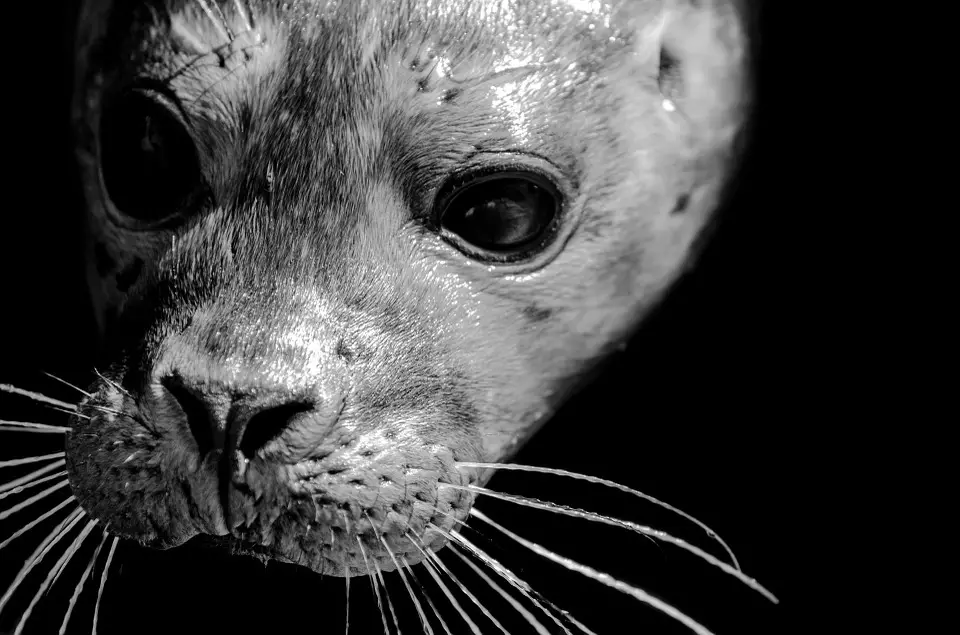
Of course, we are not Steller sea lions. Steller sea lions are much larger and adults can weigh over 1000 kg (2200 lbs), and have lung volumes that are proportionally larger than those of humans. But does that mean that they lose CO2 faster or slower than us? My guess is that because of our size we lose CO2 at the same rate or perhaps somewhat faster than Steller sea lions, but I can’t prove it.
The release of CO2? Unknown, but likely less than 4 minutes for a 2-minute dive.
Lactate
Now I did talk about lactate earlier. As it turns out it takes about an hour for lactate levels to return to normal after heavy exercise (or a dive during which you feel significant leg burn). This recovery time can be reduced to about 50 minutes if you go jog or go for an easy bike ride.
I wouldn’t wait for it if I were you. A better solution would be to not dive to exertion, so you will have a longer dive session. Lactate is only produced in significant quantities once your muscles become hypoxic. You can feel it as leg burn towards the end of your dives.
Lactate? Don’t wait for it…
In conclusion, if you want to make long and comfortable dives your breathe up should be at the very least 3 minutes, so that your high energy phosphates are fully recharged. Better still, take 4 minutes in between dives so that your CO2 levels are back to normal. Of course, during the breathe up, and especially the last 2 minutes you should try to be completely still.
And another method is to not overthink it and just do what feels right… But that would not make for very interesting articles. Let us know what your approach is below!
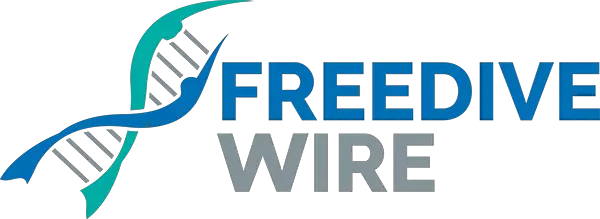
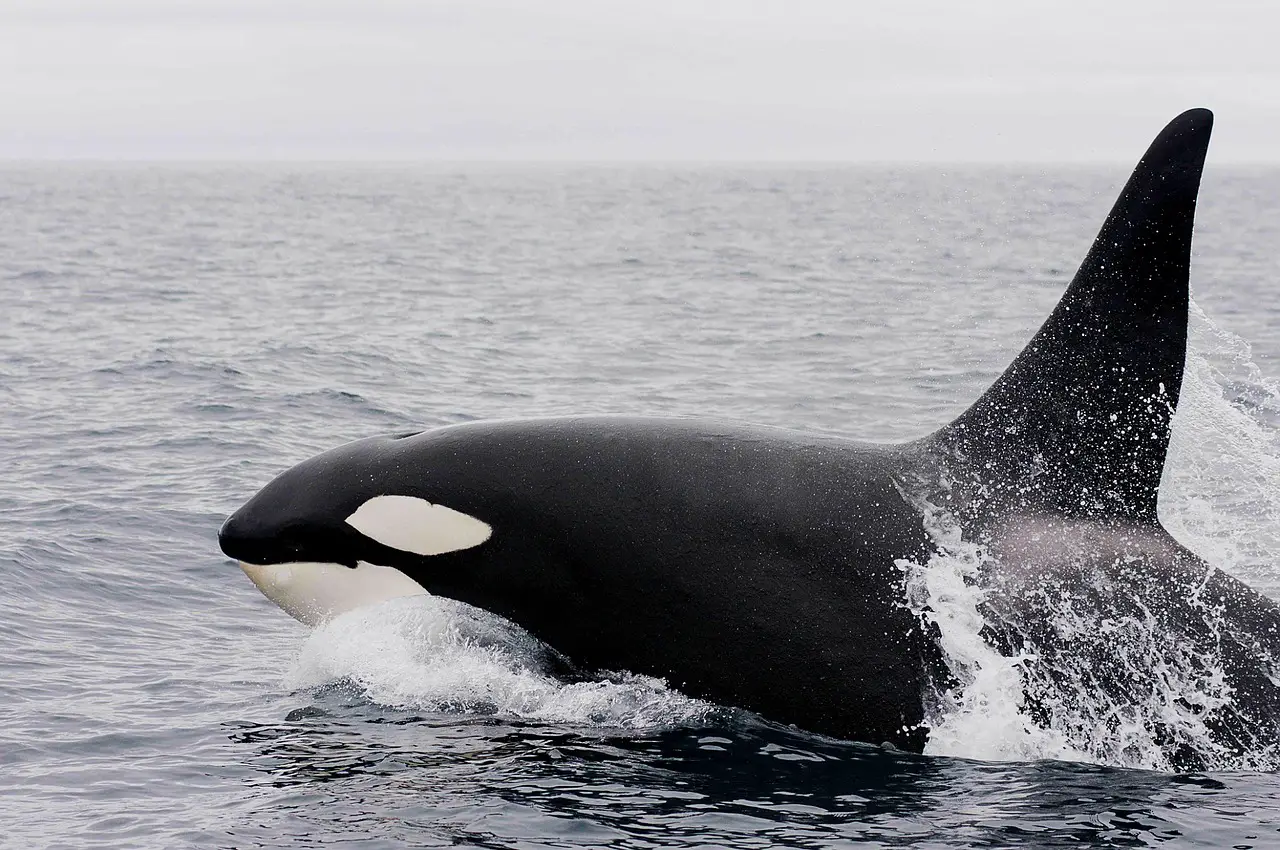
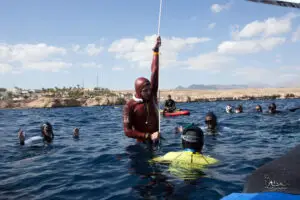
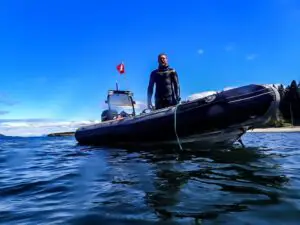
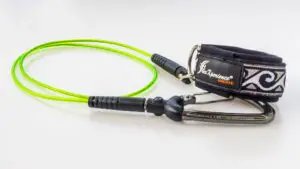
Interesting stuff! Do you think this is why the 2:1 rest to dive ratio (2min dive, then 4min rest) was initially thought of?
That’s a good question. I’m not sure. It seems to make sense considering the rate of CO2 off-gassing, although what we really need is data for N2, because that is the dangerous stuff.
I believe the 2:1 guideline was developed in regard to nitrogen off-gassing for freedivers to avoid DCS (and an extension of that guidance is to perform at least 8min surface intervals once diving beyond 25m). But I suspect that guidance was developed based on very little evidence or calculation (and I’m not sure where from), though it does seem plenty conservative enough since I’ve not encountered any divers who have experienced DCS following it (this guidance is shared in freediving classes throughout the United States). Eric Fattah did develop his own decompression algorithm for freedivers when he released his Liquivision gauges, which Herbert Nitsch was using for his deep no-limits dives.
That is what I thought as well (re: the 2 to 1 guideline), and it makes perfect sense, N2 is the only thing that presents a real danger. I’m currently doing some calculations on DCS and, although a conservative system is of course much better than no system, I think we might be able to come up with something better for deep recreational divers, there are divers (especially spearfishers that have long bottom times at >30m) that get in trouble. There have also been quite some cases reported from the ama divers in Japan.
I use a Liquivision watch, so I put my faith in Eric’s calculations rather than specific surface intervals. The watch indicated my residual nitrogen levels were high once diving <17 m (doing a series of ~3 min hangs), and several times after a series 30-40 m dives. However, I don't know the algorithm it uses.
Thanks Jaap, very interesting! This is the best exploration/explaination of the topic I’ve ever seen. There are several interesting insights for me. and it fits my experiance diving frc, doing 1:30-2;10 dives. With short easy dives, 2 min + feels fine, longer dives there is a noticable increase in discomfort and shorter dive time with surface intervals less the 3:30, and If I’m really stretching, surface interval of 5 minutes+ is needed to get the best dive time. My dives are nearly all low exertion, less than 90 ft, very little leg burn. This suggests that going a bit longer, especially for long deep dives,might be a good idea.
My pleasure! If you feel little leg burn, it is most likely the CO2 causing the discomfort. I usually stick to 2:30 breathe ups until I do my first 25m+ dive and then go to 4 minutes.
I have been using the 1:2 ratio for the past 49 years, with good results. Never had a black out. I also practice the calm descent and clam ascent consistently. My average bottom time is still comfortably around a minute but can manage 1:34 at 15.8m(when there was a Kingfish involved, last summer :)) Down South in NZ (Oamaru) I do most of my diving 6-12 m. So, all excellent advice. Celebrating my half century with a tropical trip next year. Bottom line, look after yourself and your mates, if they get silly and never stop learning.